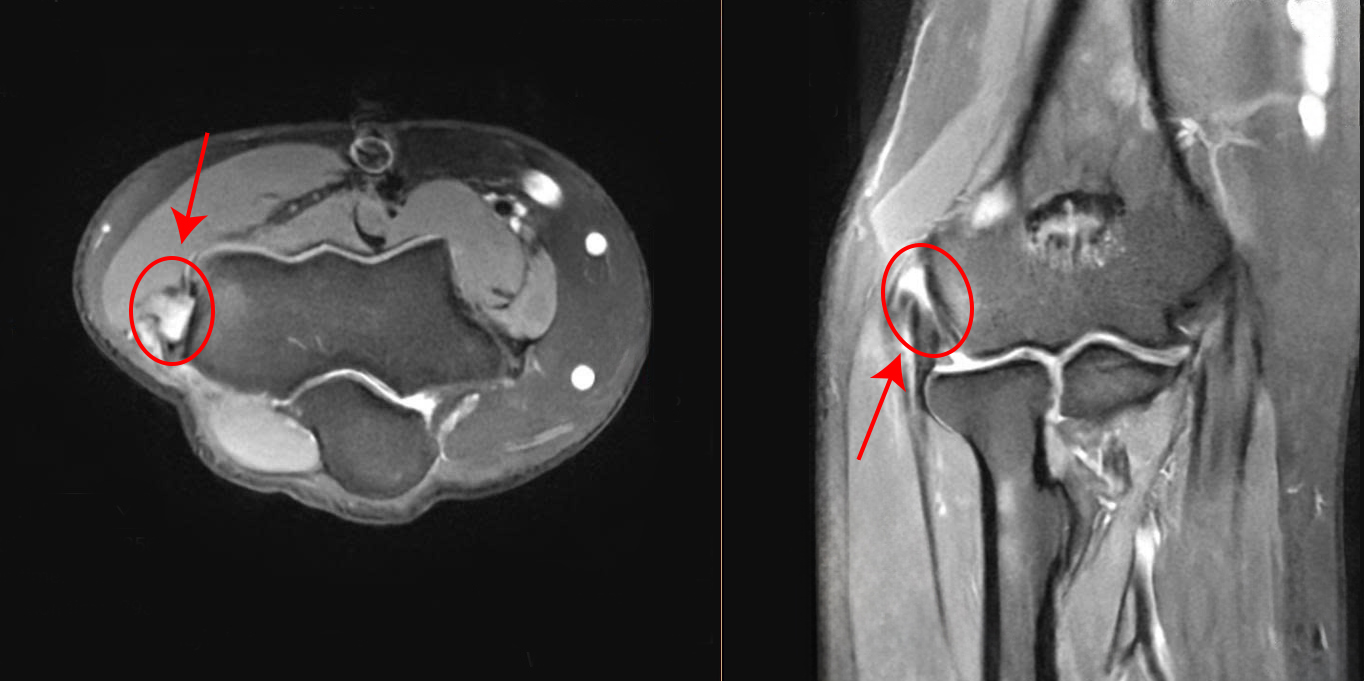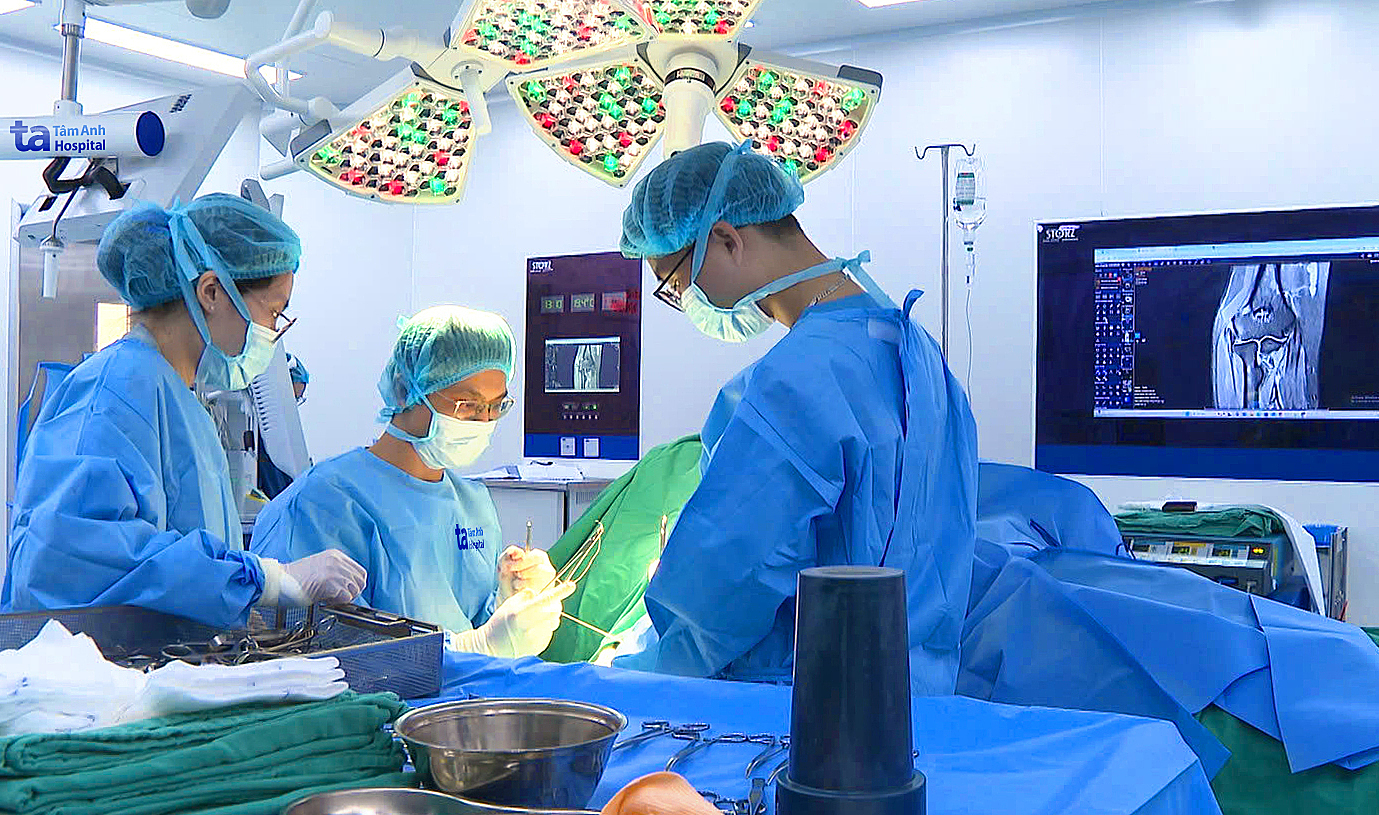Dr. Vu Trung Hieu, from the Orthopedic Trauma Department at Tam Anh General Hospital Hanoi, observed pain on the outer side of Thuong’s elbow and weakness in her wrist extension, suspecting a rupture of the extensor tendon at the lateral epicondyle of the humerus. An MRI confirmed a rupture of approximately two-thirds of the extensor tendon at this location.
The lateral epicondyle is the attachment point for 12 forearm extensor tendons, which control wrist and finger movement. A complete rupture of all 12 tendons results in a complete loss of extension and flexion. Partial ruptures, involving fewer than 12 tendons, cause pain and weakness, but patients retain some movement, often leading to misdiagnosis as lateral epicondylitis.
If not detected promptly, partial tendon ruptures can progress, as the torn tendon fibers retract over time, making reattachment difficult. Dr. Hieu warned that Thuong’s condition could have led to a complete rupture and permanent disability.
 |
Thuong's MRI scan reveals the tendon rupture. Photo: Tam Anh General Hospital |
The most common cause of extensor tendon rupture at the lateral epicondyle is acute trauma, such as a sudden fall or excessive extension of the arm, straining and tearing the tendon. Thuong had a history of extensor tendonitis and tendon degeneration, making her susceptible to rupture even from minor impacts.
Dr. Hieu performed surgery to repair the tendon, using ultra-strong sutures to stitch the torn fibers and anchoring the tendon to the bone with an anchor at the attachment point. Thuong recovered well, being discharged within 24 hours. She was prescribed rehabilitation exercises, such as gentle fist clenching and extension, to prevent muscle atrophy and joint stiffness.
 |
Dr. Hieu sutures Thuong's ruptured extensor tendon. Photo: Tam Anh General Hospital |
Patients should be aware of symptoms such as elbow pain and weakness after an injury, especially if they hear a "pop" sound. Suspected cases require prompt medical attention for diagnosis and treatment to avoid complications. Most surgical repairs of extensor tendon ruptures are successful, with patients experiencing pain relief and regaining normal movement within 6 weeks, and the ability to engage in strenuous activities or sports after 3 months.
At the Orthopedic Trauma Department of Tam Anh General Hospital Hanoi, most patients undergoing simple procedures like tendon repair, carpal tunnel release, or cartilage repair can be discharged the same day. Even for major surgeries like joint replacement, patients under 65 without underlying conditions, or those with well-managed conditions and preserved pre-operative mobility, can often be discharged within 24 hours.
Thanh Long
*The patient's name has been changed.
| Readers can submit questions about musculoskeletal diseases here for doctors to answer. |












